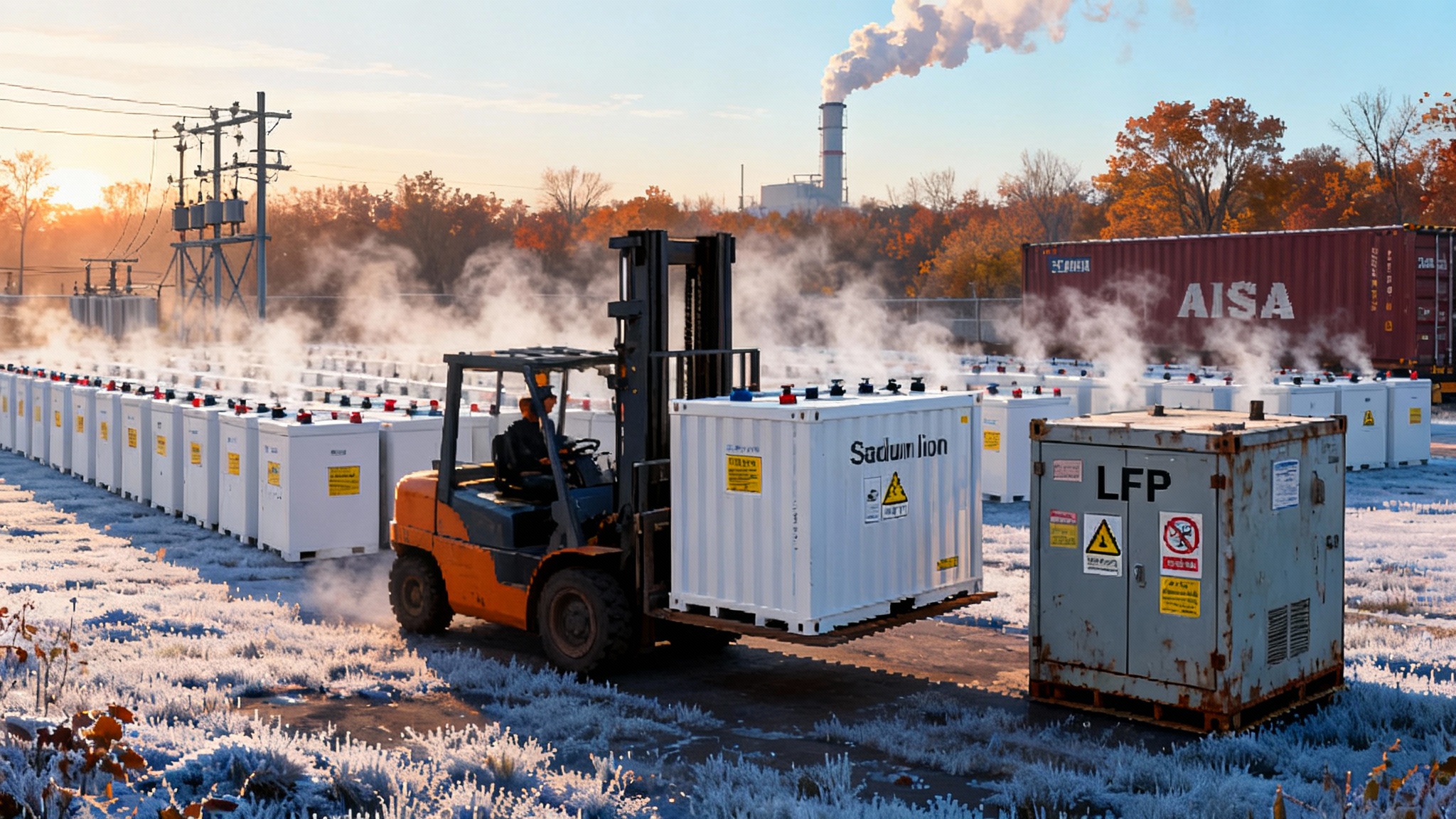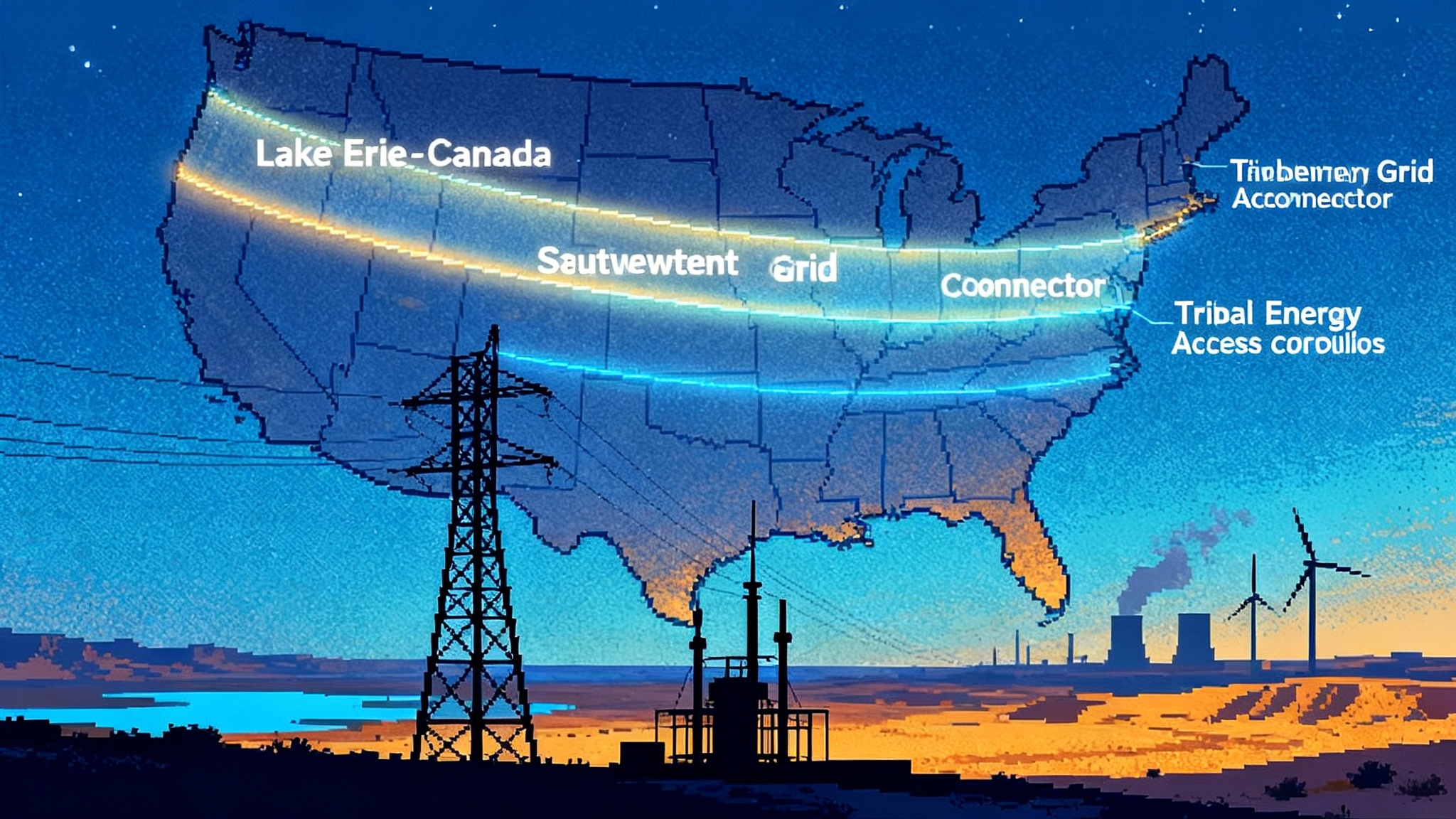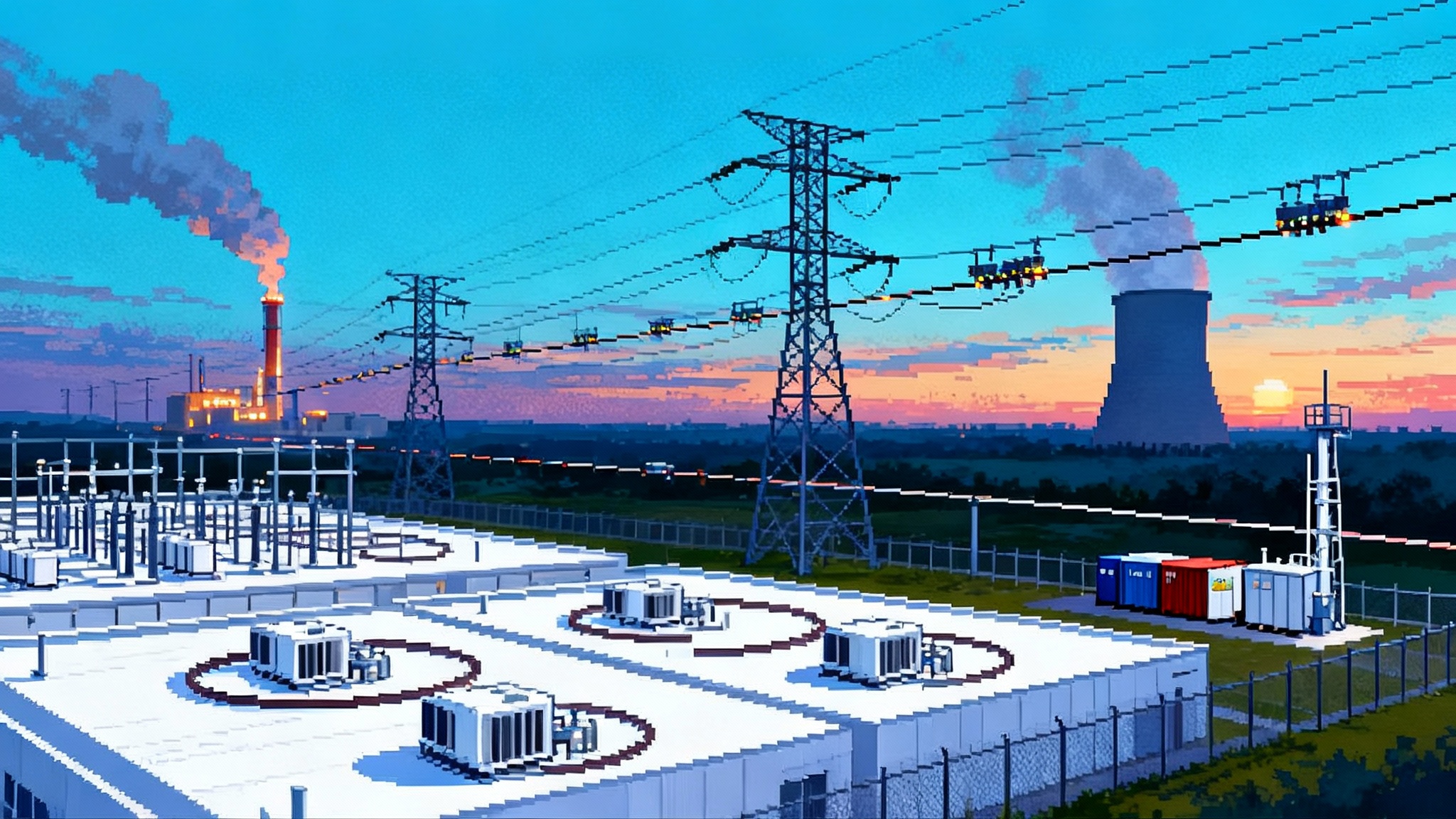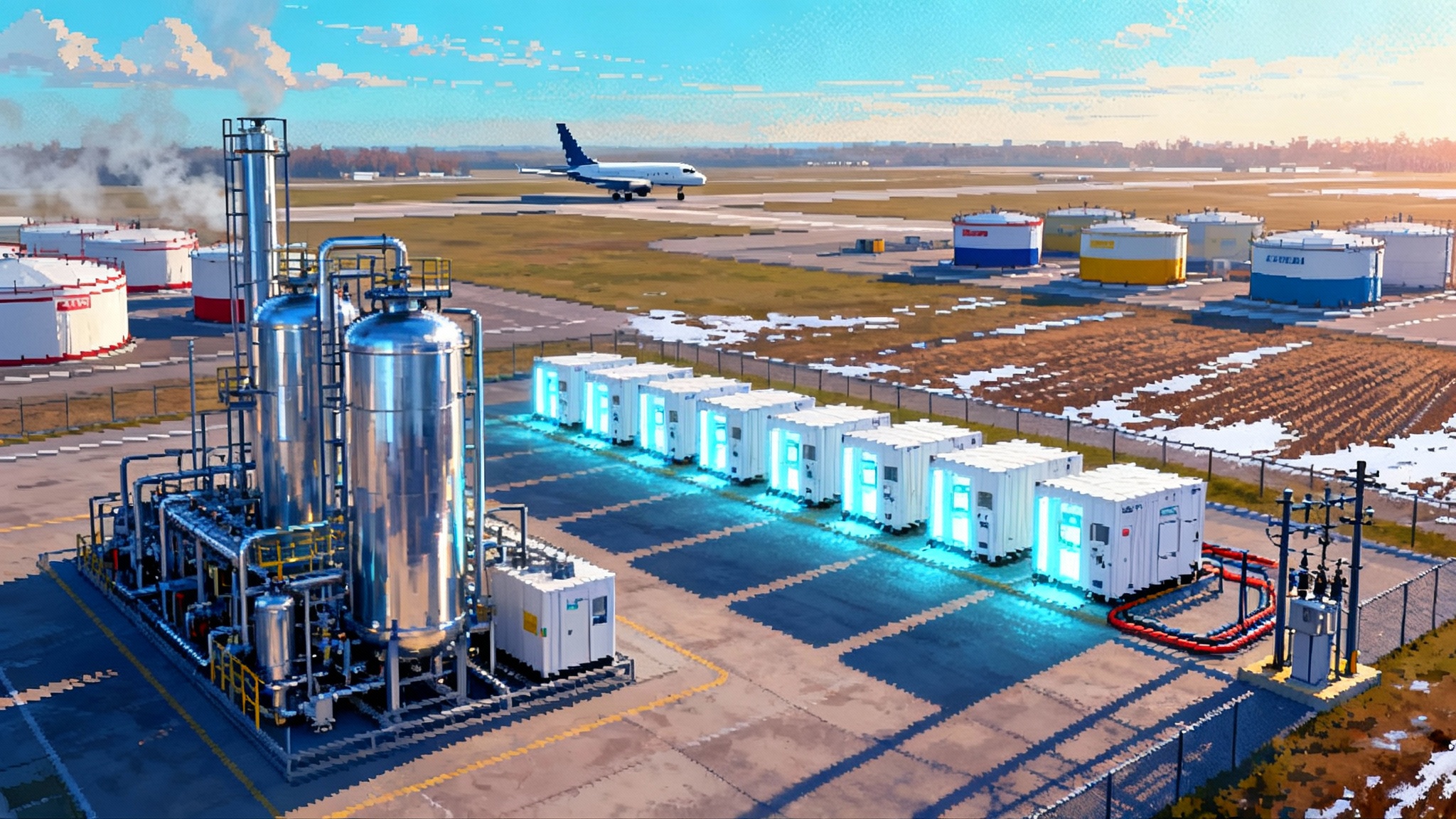2025’s Virtual Power Plant Inflection: Pilots Become Market Power
In one California summer and two pivotal Commission decisions under Order 2222, virtual power plants shifted from demos to dependable grid products. Here is what changed, which regions move first, and the practical playbook for 2026 to 2028.

The moment pilots became power plants
In the span of one California summer and a few Commission votes, virtual power plants (VPPs) crossed a line. The idea that thousands of small devices could operate like a single, dependable resource is no longer a future promise. It is a grid product with rules, programs, and measurable performance.
Two things happened almost back to back. First, federal regulators moved the ball on participation rules for distributed energy resource aggregations in organized wholesale markets. In late summer 2025, the Commission accepted the California Independent System Operator and New York Independent System Operator compliance filings under Order 2222, subject to follow up clarifications and upgrades. The acceptance matters because it tells market operators and utilities what is in bounds and what must be fixed for distributed fleets to sell energy, ancillary services, and capacity at scale. You can read how the Commission took FERC action on Order 2222.
Second, a utility sized field test arrived. On March 24, 2025, Pacific Gas and Electric announced the Seasonal Aggregation of Versatile Energy program, or SAVE. The program enrolled roughly 1,500 home batteries and about 400 smart panels, with planned dispatch for up to 100 hours from June through October 2025 to relieve distribution constraints. The utility sends week ahead hourly signals based on local grid needs, and aggregators translate that guidance into device level actions. The frame is simple and very practical: can a few thousand customers reduce or shift enough load to keep specific substations and feeders within safe limits during hot evenings. PG&E’s announcement describes the mechanics and participating vendors in detail, including Sunrun, Tesla, and SPAN. See the PG&E SAVE program launch.
Add one more signal. New market data released in mid September shows that flexible VPP capacity in North America reached the high thirty gigawatt range, growing about 14 percent year over year. The report’s headline is not just the size. It is the spread. More regions have more programs, more aggregators, and more offtakers that now pay for flexibility. Capacity growth lagged activity because program caps and accreditation rules did not expand as fast as enrollments, but the direction is clear. The pilots are now graduating into products.
What changes next
Three policy and market changes define the next chapter and explain why 2026 through 2028 will be the first true scale window.
1) Lower asset thresholds
Order 2222 requires markets to let aggregations as small as 100 kilowatts participate, and to permit heterogenous fleets that bundle different device types. That is a quiet revolution. California’s market previously used a 500 kilowatt aggregation threshold. New York built a new participation model that expects small fleets to clear tests that once assumed utility scale resources. When the minimums drop, more neighborhoods can form viable portfolios. A subdivision with a few hundred batteries or a cluster of commercial buildings with heat pumps and managed chargers becomes a dispatchable unit. A realistic rule of thumb: 1,500 home batteries at roughly 5 kilowatts each can cover 7 to 10 megawatts for one to two hours, which is often enough to keep a stressed substation within its thermal envelope on a triple digit afternoon.
The implication is not just more market access. It is better granularity. Operators can buy flexibility exactly where it helps. You do not need 100 megawatts on the city’s north side if the problem is six megawatts on Feeder 17 serving two schools and a retail center.
2) Better data access and settlement
The friction has rarely been technology. It has been program plumbing. Enrollment has required multiple utility portals, manual document checks, and long delays for interval meter provisioning. Settlement has meant reconciling five minute wholesale telemetry with fifteen minute or hourly customer data, while avoiding double counting with retail programs. This is changing.
The new filings tighten rules on telemetry, baseline methods, and aggregator responsibilities. Utilities are opening more automated pathways for customer authorization and meter data delivery that can meet wholesale settlement needs. Think of this as swapping paper checks for instant payments. Faster and cleaner data lets aggregators bid day ahead, prove delivery, and pay customers within weeks, not quarters. That accelerates customer marketing and reduces working capital.
For program operators, the to do is clear. Standardize device telemetry and enrollment messages. Pre certify inverter models and smart panel controls. Implement consistent baseline methods across retail and wholesale programs to avoid overlapping credits. The payoff shows up in both acquisition cost and capacity factor.
3) Capacity accreditation that favors verifiable performance
The last constraint is also the most consequential. Markets and regulators are defining how many capacity credits a VPP can earn, and how those credits degrade or improve with performance. The trend line favors probabilistic methods that reward fleets with strong availability during the exact hours that drive system risk.
Why it matters: flexibility that is available from 6 to 9 p.m. on the hottest weeks in August is more valuable than midday flexibility in April. Accreditation that weights the risk hours correctly lets VPPs compete head to head with peaking plants. It also gives aggregators a path to earn more by improving device reliability, customer retention, and forecasting. Expect more regions to adopt two core ideas. First, accreditation based on demonstrated performance in events or proxy hours, rather than a flat nameplate discount. Second, forward looking performance penalties that reduce payouts if a fleet misses specific call windows. Both are fair, bankable, and scalable.
As transmission rules evolve, VPPs complement new wires rather than replace them. For a broader view on timing and scope, see how Order 1920 reshapes transmission.
Which regions move first
A simple map helps here. New York and California lead. PJM and the Midcontinent market are next.
-
New York. The Commission’s spring and fall orders on New York’s filings set out a clear path for distributed energy resource aggregations to offer energy and ancillary services, with full implementation targeted by late 2026. The state’s utilities already run large thermostat and battery programs, and the data access framework the Public Service Commission launched is aligning retail and wholesale data needs. Expect capacity accreditation pilots in 2026 and broader participation in 2027 auctions.
-
California. California has allowed distributed aggregation for years, but 2025 is when the pieces clicked for scale. The SAVE program created a template for distribution relief with wholesale quality telemetry. The Commission’s acceptance of California’s compliance plan, with required improvements for coordination and demand response models, sets the table for fleets that can serve both the wholesale market and local grid needs without conflicts. Expect a ramp through 2026 as utilities bring more circuits into targeted dispatch programs and aggregators adapt their bidding to five minute market intervals.
-
PJM. The Commission’s explainer notes a 2027 capacity market pathway for distributed aggregations, with energy and ancillary services arriving in 2028. Translation for planners and investors: the 2026 to 2027 auctions are the last window to line up accredited VPP capacity for the 2028 to 2029 delivery year. Early movers will focus on commercial buildings with controllable loads and behind the meter batteries in capacity constrained zones.
-
Midcontinent. The Midcontinent operator is working toward a two phase implementation with a first tranche in 2027 and full functionality in 2029. That sounds slow, but today’s distribution congestion and interconnection backlogs are already creating local opportunities. Expect municipal and cooperative utilities in the northern tier to run their own aggregation programs that mirror wholesale rules so they can graduate to the market once the gates open.
The order and pace differ, but the direction is uniform. A resource that was hard to count is being counted, and it is moving from pilots to auctions.
Why virtual power plants are the fastest, cheapest relief
If you need new capacity for the summer after next, you have three options. Build wires, build turbines, or orchestrate the devices you already have. Transmission projects take many years. New gas peakers can be built faster, but they must wade through environmental review and interconnection queues that are now measured in years. Distributed flexibility is different. The devices are mostly in place, or can be installed in months. The interconnection is already there. The primary work is customer enrollment, control integration, and settlement plumbing.
Consider the three problems most grid planners are juggling.
-
Peak demand during extreme weather. Residential batteries, managed electric vehicle charging, and smart thermostats can shave the evening peak in a way that maps to risk hours. The realistic dispatch window is two to four hours. That is exactly the window that stress tests the system. Rising data center load only adds urgency; see AI’s gigawatt appetite.
-
Distribution congestion on specific circuits. Programs like SAVE target the exact feeders that overload. Many cities have 10 to 20 problem circuits that account for the majority of summer headaches. A neighborhood level VPP built from a few thousand customers can defer a transformer bank upgrade or a reconductoring project for two or three years. For supply chain context, revisit the 2025 transformer crunch.
-
Interconnection backlogs. Utility scale solar, storage, and wind are still the backbone of decarbonization, but the queue is clogged. A VPP is queue free. It leverages the meter and service panel that exist today. It also spreads risk. If one battery fails, the fleet barely notices. If a new peaker slips, the whole plan is at risk.
The financial math reinforces the operational story. Aggregators can acquire and dispatch capacity in months. Payments flow through wholesale markets or utility programs without long term fuel risk. Because accreditation is shifting toward measured availability in exact risk hours, VPPs can be priced against the value they deliver, not discounted by old rules that assumed they were unreliable. That does not make them free or effortless. It makes them fast to deploy and sensible to pay for, which is the definition of cheapest when you need reliability next summer, not next decade.
How the machine works, simply
It helps to translate the jargon into a picture. Imagine a conductor leading a neighborhood orchestra.
- Score. The market operator posts day ahead prices and ancillary needs. The utility posts distribution constraints. Together these form the score that says when and where flexibility is valuable.
- Musicians. Batteries, electric vehicle chargers, heat pumps, and thermostats are the musicians. Each has a range and a stamina limit. A battery can play loud for a short time. A thermostat plays softer but can keep going. A smart panel can mute the least important loads so the whole home stays comfortable.
- Conductor. The aggregator reads the score and tells each device how to play. Five minute telemetry streams confirm what is happening. Baselines estimate what would have happened without the program, and verification checks performance against that line. Settlement pays each musician based on the part they played.
When this system is aimed at the exact hours and circuits that create system risk, the orchestra sounds like a real power plant.
The 2026 to 2028 playbook
Utilities, aggregators, regulators, and capital providers each have a job to do. Here is a concise checklist.
-
Utilities
- Publish an annual list of the top distribution constraints with feeder level windows and megawatt magnitudes. Treat it like a mini capacity auction for neighborhoods.
- Pre certify device types for telemetry and control, and agree to one enrollment data standard across programs to cut customer acquisition cost.
- Offer multi year contracts that pay for verified availability in defined risk windows. Include fair penalties for misses and bonuses for stretch performance.
-
Aggregators
- Build diversified portfolios that mix devices with complementary profiles. Pair two hour batteries with thermostats, water heaters, and managed chargers so the fleet can sustain a three to four hour call.
- Invest in forecasting and retention. The best accreditation value comes from fleets that are there precisely when needed. Dropout risk must be measured and managed like a fuel supply.
- Plan for wholesale and retail alignment. Design your bidding and telemetry so the same devices can serve distribution needs and clear wholesale products without double counting.
-
Regulators and market operators
- Finalize accreditation rules that weight the exact risk hours. Use measured performance from the last two summers to set initial credits, then let fleets earn up through better availability.
- Cut the last data bottlenecks. Require utilities to offer near real time meter data and automated authorization flows so aggregators can settle within one billing cycle.
- Publish a transparent path to include distributed aggregations in capacity markets by the 2028 to 2029 delivery year in regions that are still ramping implementation.
-
Capital providers
- Underwrite against accredited availability, not just device counts. Look for contracts that pay for verifiable performance in named hours and zones.
- Finance customer hardware where it unlocks high value circuits. A small rebate for smart panels or battery upgrades can unlock disproportionate grid value when it clears a feeder constraint.
What to watch before next summer
A few milestones between now and June 2026 will tell you how quickly VPPs are scaling into market players.
- Follow up compliance from California and New York that clarifies heterogeneous aggregations, distribution utility review timelines, and telemetry standards. This will determine how easily mixed fleets can sell ancillary services without friction.
- Capacity accreditation pilots that use real event data from 2024 and 2025 to set credits for 2026 and 2027. Expect early versions to be conservative, then to adjust as fleets prove availability during peak risk hours.
- Utility procurement that resembles wholesale auctions at the circuit level. The SAVE model is a starting point. The next step is multi year procurements that commit to pay for the local flexibility the system actually needs.
- Early PJM and Midcontinent programs that mirror future market rules. These will build muscle memory so that, when the wholesale doors open wider in 2027 and 2028, aggregators already know how to bid, settle, and perform.
The bottom line
After a decade of experiments, 2025 provided the missing ingredients for scale. Regulators set clear boundaries that let distributed fleets act like real market participants. A utility put thousands of devices to work where the grid actually hurts. Market data showed that flexible capacity is not only growing, it is spreading into more regions and customer classes. The result is a practical plan for the next three summers. Grow portfolios where the rules are ready, aim them at the exact hours and circuits that drive risk, and earn capacity credits for verifiable performance. Do that, and by 2028 VPPs will not be the new thing. They will be simply, the thing that kept the lights on when it was hottest, at the lowest cost, in the places that needed it most.








